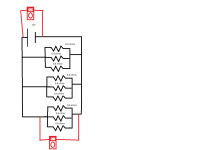I have a weird situation here that I'm sure it's just something I'm overlooking. I would really appreciate any help!
We have a battery that is powering a bunch of glow plugs. From my understanding the glow plugs are exactly the same as resistors.
I noticed it is dropping voltage from my 12V battery down to 7v or so.
Why would it not just stay at 12V?
The reason I'm asking is my glow plugs are not getting hot quickly enough.
Thank you!
We have a battery that is powering a bunch of glow plugs. From my understanding the glow plugs are exactly the same as resistors.
I noticed it is dropping voltage from my 12V battery down to 7v or so.
Why would it not just stay at 12V?
The reason I'm asking is my glow plugs are not getting hot quickly enough.
Thank you!




